This post may contains affiliate links. Read our full disclosure here.
When it comes to creating a comfortable and welcoming home, how different flooring materials affect room acoustics and feel is often overlooked but incredibly important. I’ve noticed that whenever I walk into a space, my impressions are shaped not just by what I see, but by how the room sounds and feels underfoot. Those hollow footsteps in an empty room with hardwood floors versus the hushed atmosphere of a carpeted bedroom create totally different vibes.
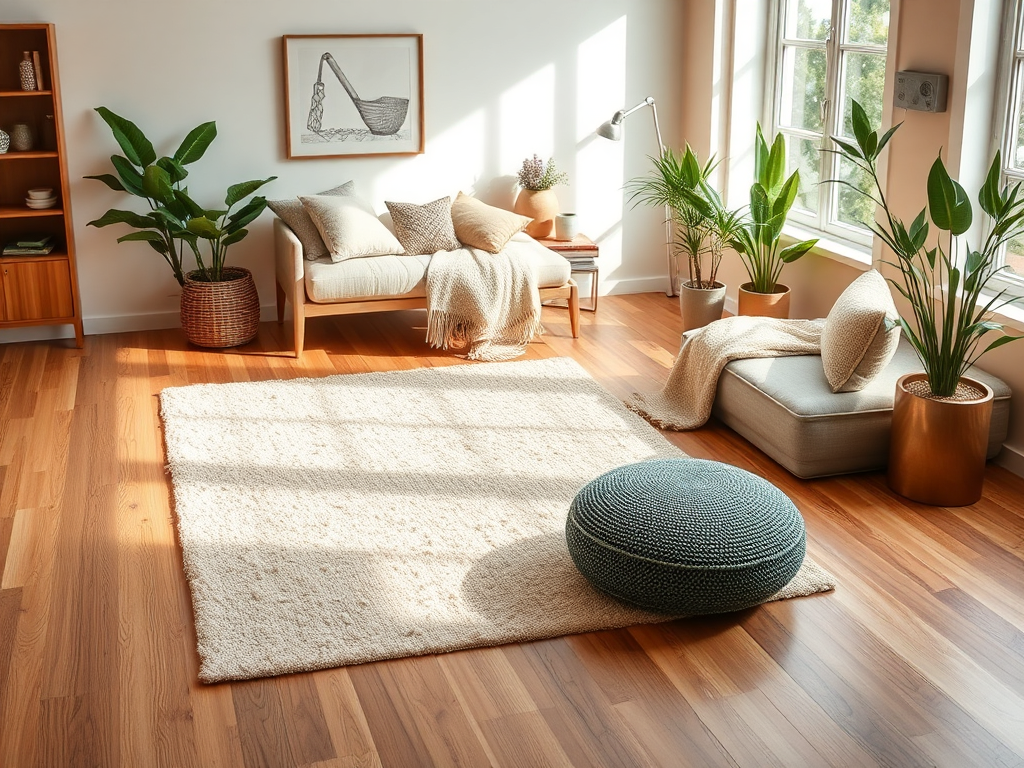
How different flooring materials affect room acoustics and feel goes far beyond simple aesthetics. The flooring you choose fundamentally changes the way sound travels, how temperature is retained, and even influences the emotional response people have to your space. After helping my friend renovate her downtown apartment last year, we were both amazed at how switching from laminate to cork completely transformed her living room from echo-chamber to cozy sanctuary.
The Science Behind How Different Flooring Materials Affect Room Acoustics and Feel
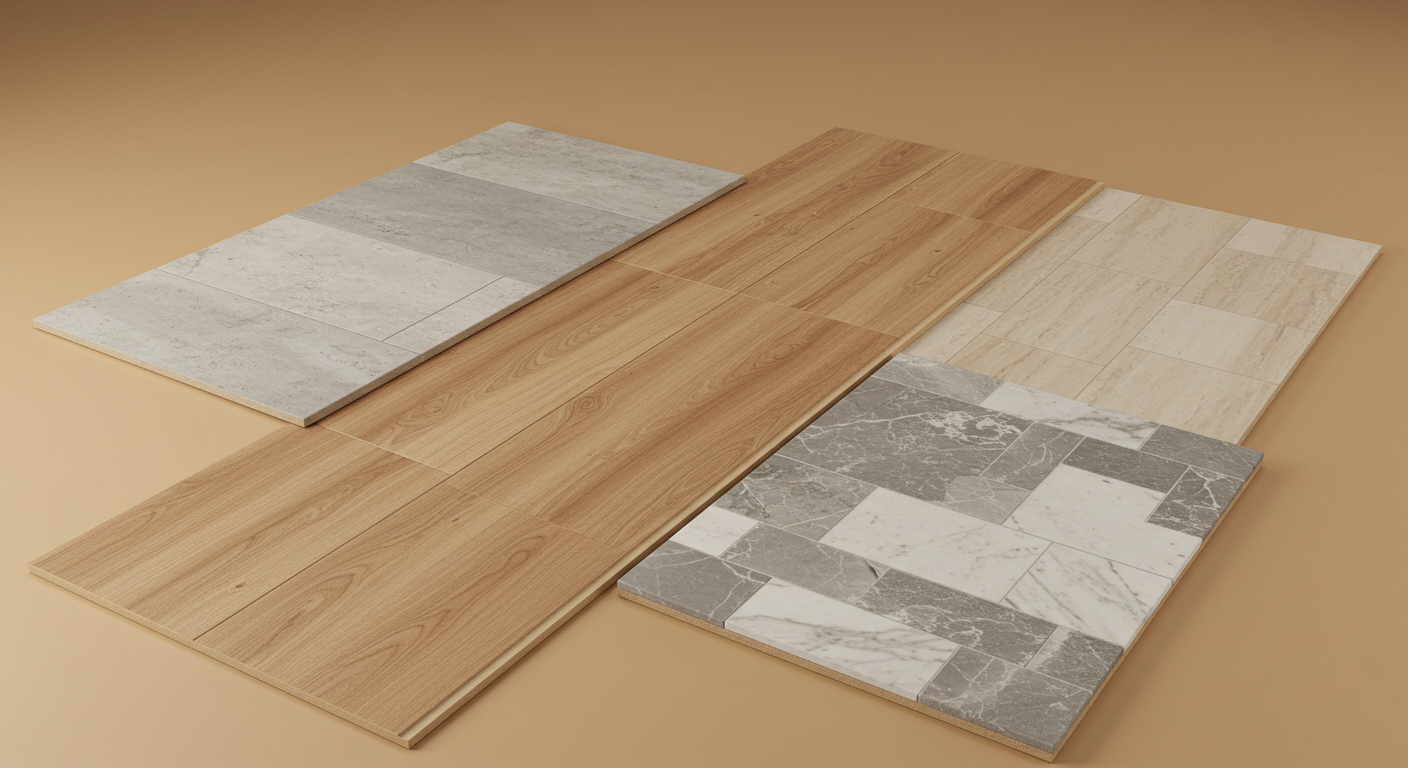
Understanding the impact of flooring on your home’s atmosphere starts with some basic science. Hard surfaces reflect sound waves, causing them to bounce around a room and create that echo effect we’re all familiar with. Softer materials, on the other hand, absorb those sound waves, reducing noise and creating a quieter environment.
Temperature plays a huge role too. Materials like tile naturally feel cooler to the touch, while carpet retains warmth. This physical sensation directly influences how we perceive a space emotionally. My boyfriend and I noticed this dramatic difference when we replaced the cold tile in our entryway with engineered hardwood – visitors immediately commented on how much “warmer” our home felt, even though we hadn’t changed anything else.
The density of the flooring material also affects how sound travels through your home. Dense materials like concrete or stone will block sound transmission between floors, while lighter materials might allow more noise to travel. This is especially important in shared buildings or homes with multiple stories. When my upstairs neighbors installed cork flooring, I suddenly stopped hearing their footsteps – a game-changer for apartment living!
“Flooring isn’t just what you stand on—it’s what shapes how your home sounds, feels, and functions every day.”
Hardwood Floors: Beautiful But Acoustically Challenging
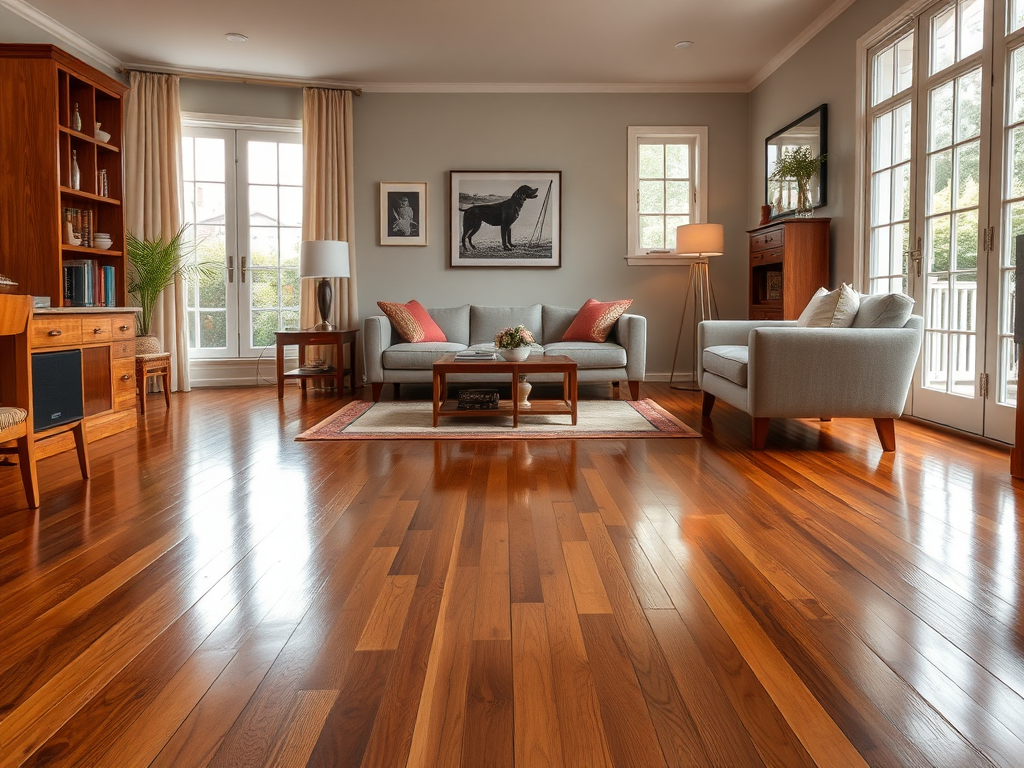
- Creates a clear, bright sound with significant echo
- Physically cool but visually warm
- Reflects sound rather than absorbs it
- Creates a more formal atmosphere
Hardwood floors may be the darling of home design, but they present some of the biggest acoustic challenges. Sound bounces efficiently off hardwood, creating that distinctive echo effect that can make conversations difficult in large rooms. When I hosted a dinner party in my hardwood-floored dining room, I noticed guests leaning in closer just to hear each other!
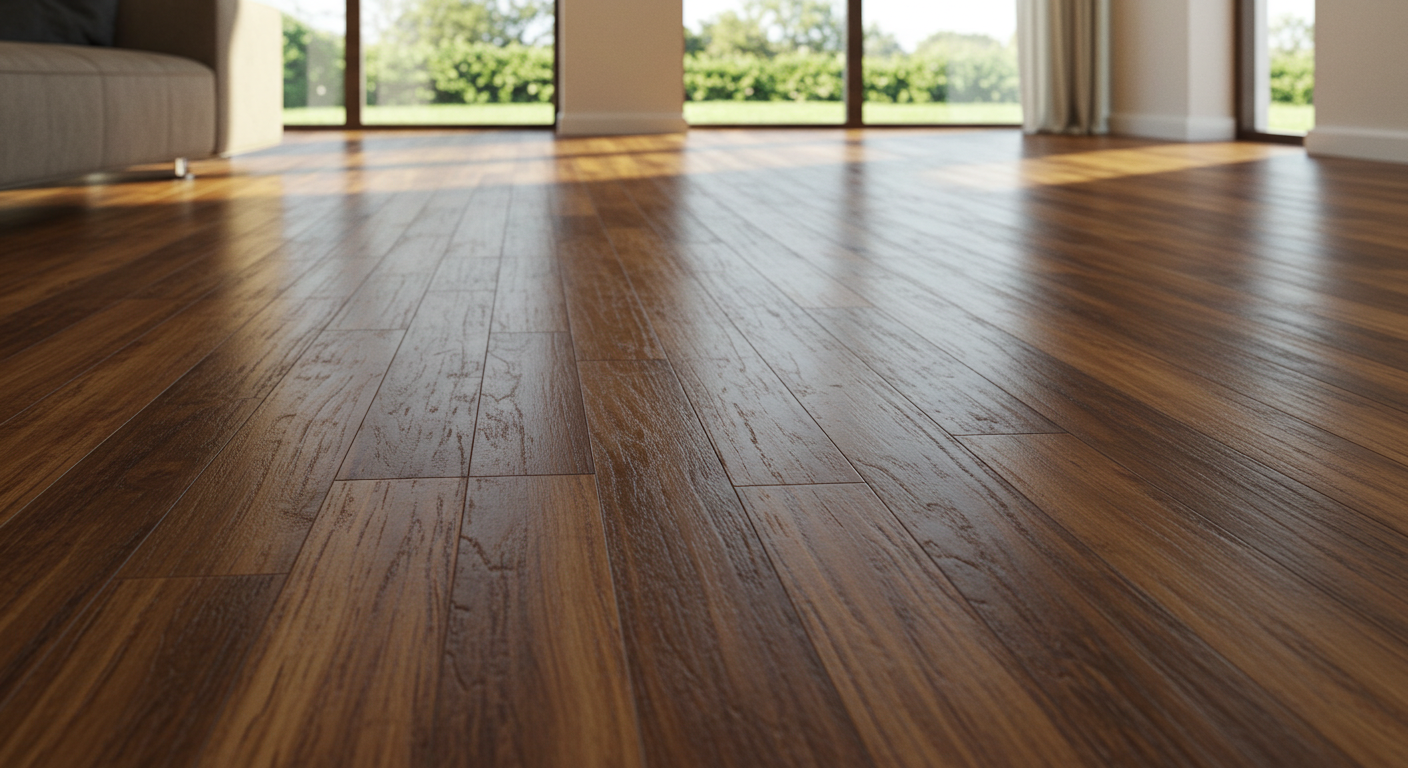
Despite feeling cool to the touch, hardwood brings visual warmth to spaces. This interesting contrast creates a dynamic feeling in rooms where you want both elegance and comfort. The natural patterns and warm tones make hardwood floors visually inviting even though acoustically they can be challenging.
To combat the echo effect without sacrificing the beauty of hardwood, I’ve found that choosing a home decor style that incorporates strategic soft elements makes all the difference. Area rugs, especially those with thick padding underneath, can dramatically reduce sound reflection while still showcasing your gorgeous floors.

Quick fixes for hardwood acoustic issues include:
- Adding thick, plush area rugs in conversation areas
- Installing floor-length drapes at windows
- Using upholstered furniture with fabric that absorbs sound
- Placing bookshelves against walls to break up sound reflection
Carpeted Floors: The Ultimate Sound Absorber
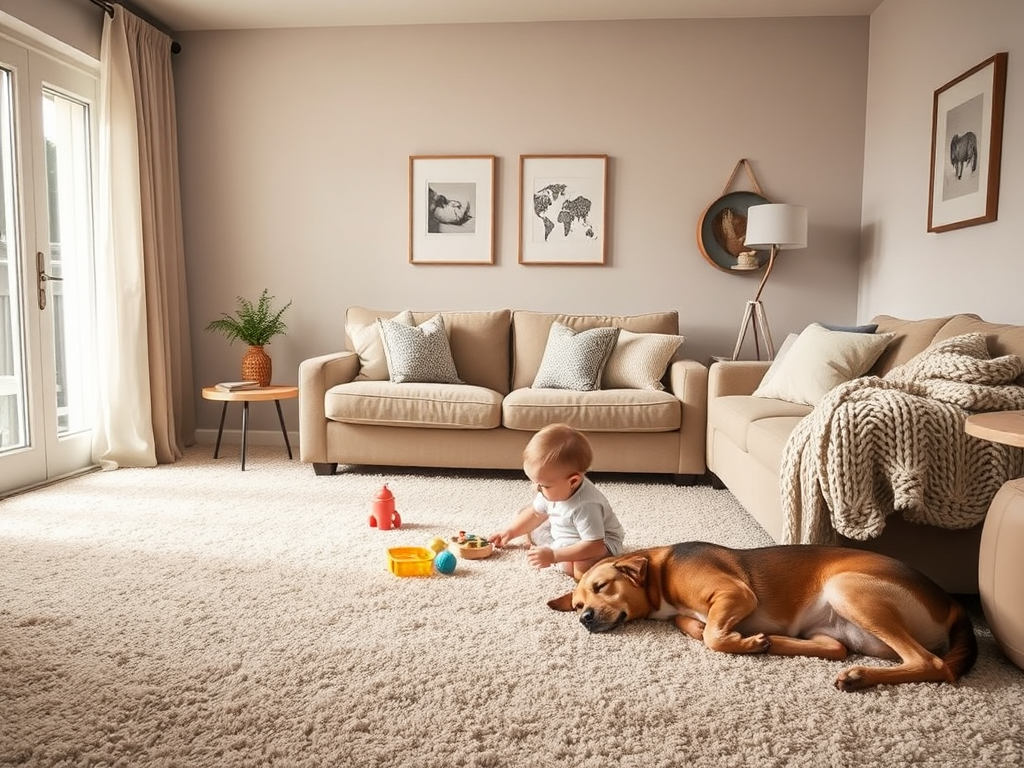
- Significantly reduces echo and ambient noise
- Creates a warm, cozy atmosphere
- Offers physical comfort underfoot
- Dampens sound transmission between rooms
If acoustics are your primary concern, carpet remains the champion of quiet. Nothing absorbs sound quite like plush wall-to-wall carpeting. In my home office, the carpet makes video calls so much clearer – no more hollow echo making me sound like I’m calling from a bathroom! This sound-dampening quality creates a noticeably calmer atmosphere.
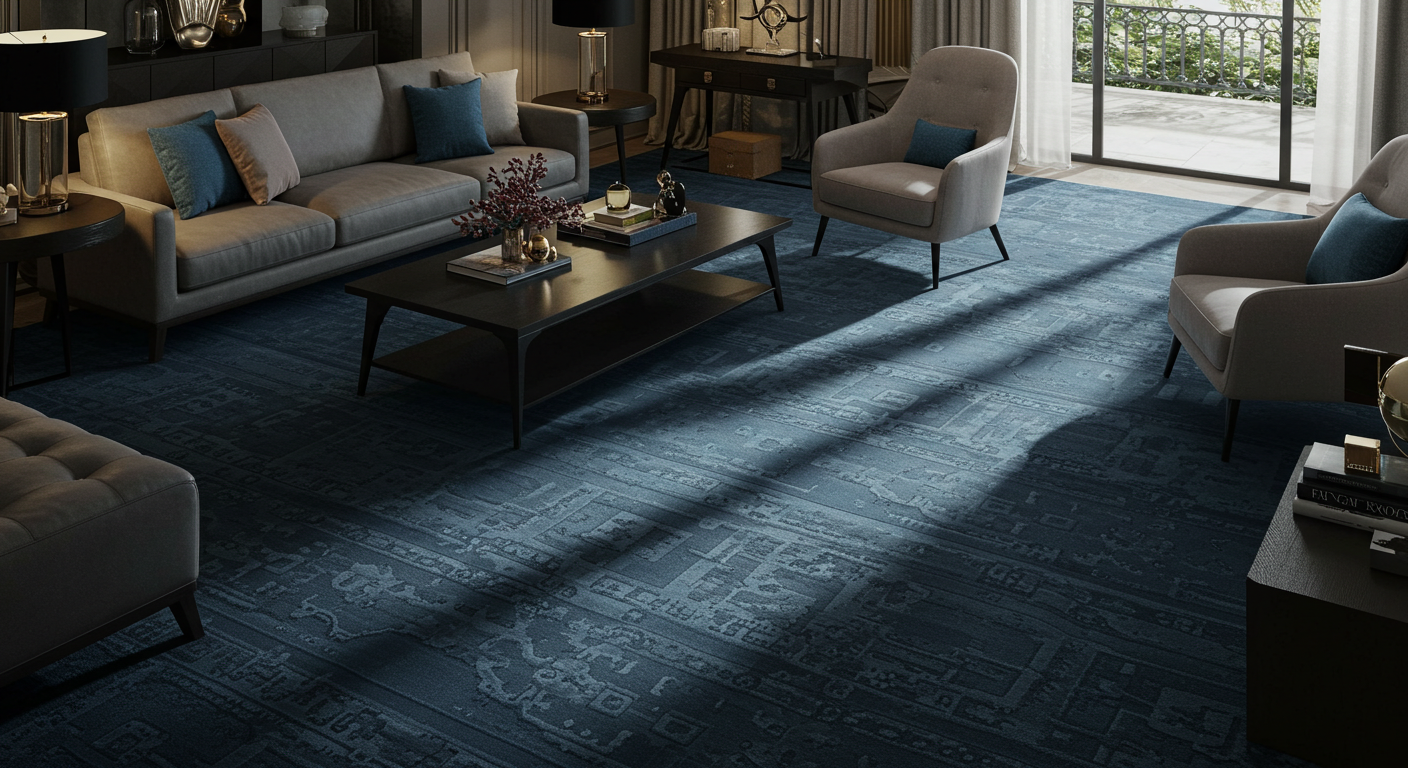
The acoustic benefits of carpet extend beyond just reducing echo. Carpet also minimizes the sound of footsteps, which is particularly valuable in multi-level homes or apartments. My sister installed thick carpet with quality padding in her kids’ rooms, and it dramatically reduced the noise that traveled to the living room below.
The texture of carpet adds an emotional dimension that’s hard to match with other flooring options. There’s something inherently comforting about a soft surface underfoot, especially in bedrooms and living areas where relaxation is the goal. When interior design styles call for comfort and warmth, carpet is often the perfect foundation.
Pro tips for maximizing carpet’s acoustic benefits:
- Choose carpets with higher pile height for maximum sound absorption
- Don’t skimp on padding – thicker padding amplifies the acoustic benefits
- Consider carpet tiles for high-traffic areas that might need partial replacement
- Vacuum regularly to maintain the air pockets that help trap sound
Tile and Stone: Echo Chambers with Practical Benefits
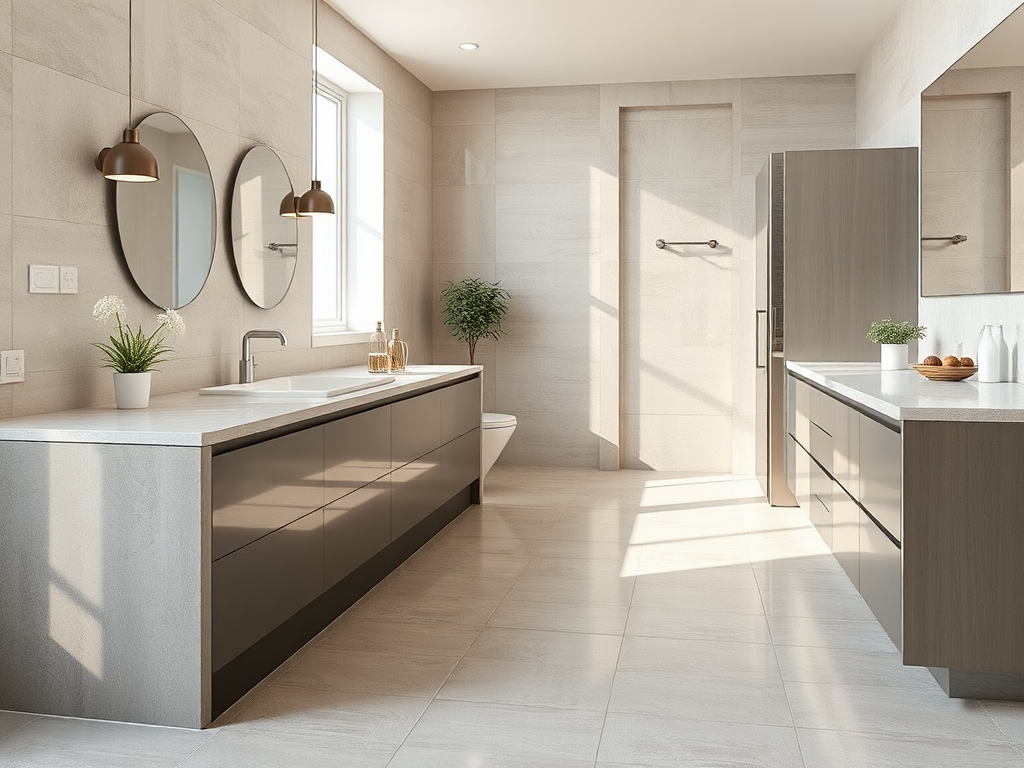
- Highly reflective of sound waves
- Creates crisp, clear acoustics (great for some spaces, problematic for others)
- Physically and visually cool
- Can make rooms feel larger but less intimate
Tile and stone flooring create some of the most challenging acoustic environments in homes. These hard, dense materials reflect sound waves almost completely, creating that distinctive bathroom echo we’ve all experienced. In my kitchen, conversations can sometimes feel like they’re happening in a cave due to the tile’s reflective properties.
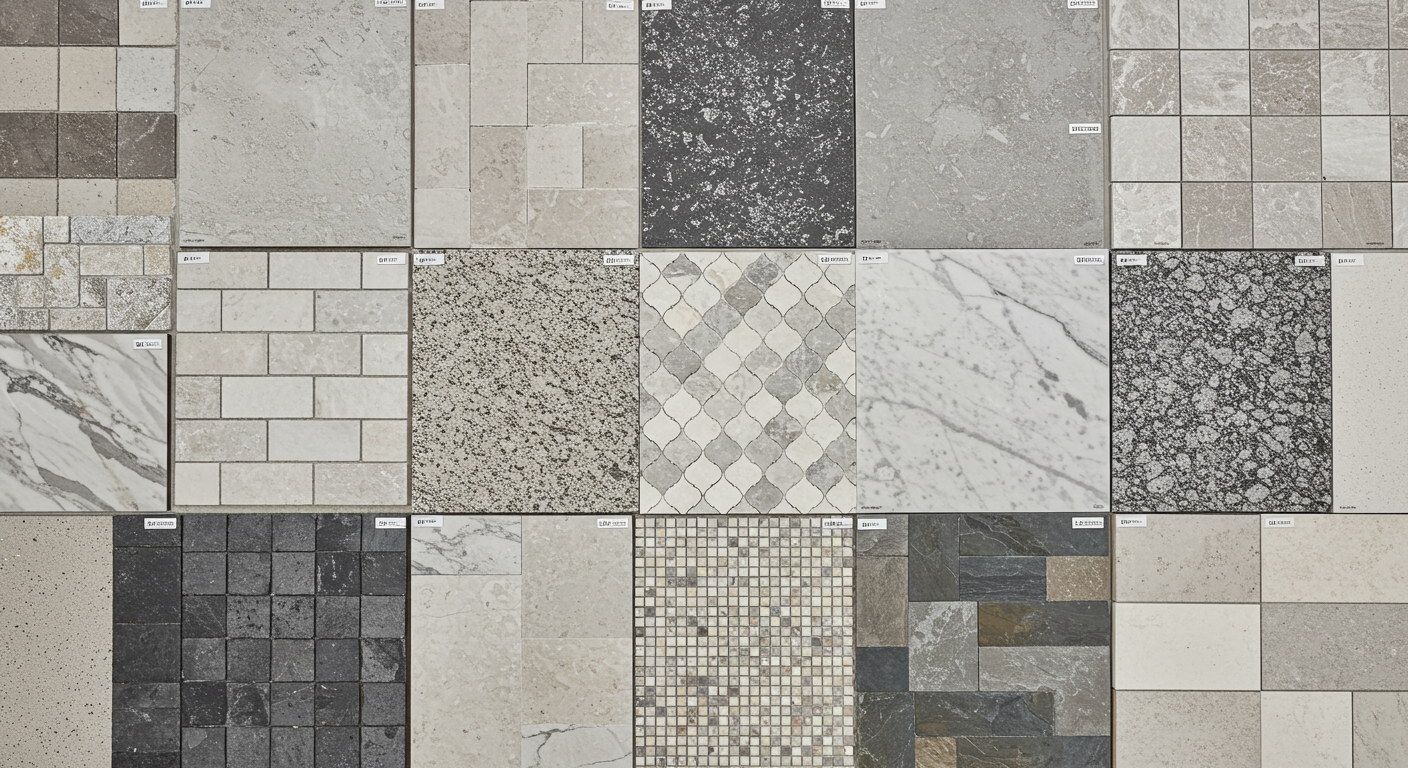
The acoustic challenges of tile don’t mean you should avoid it completely. There are practical reasons these materials dominate in kitchens, bathrooms, and entryways. Their durability and water resistance make them ideal for high-traffic or moisture-prone areas. The key is balancing their practical benefits with acoustic solutions.
Temperature sensation plays a major role in how we perceive tile and stone emotionally. These materials naturally stay cool to the touch, which can create a refreshing feeling in warm climates but might feel unwelcoming in cooler regions. I’ve noticed that planning outdoor-inspired spaces with tile works beautifully in sunrooms and spaces that get plenty of natural light.
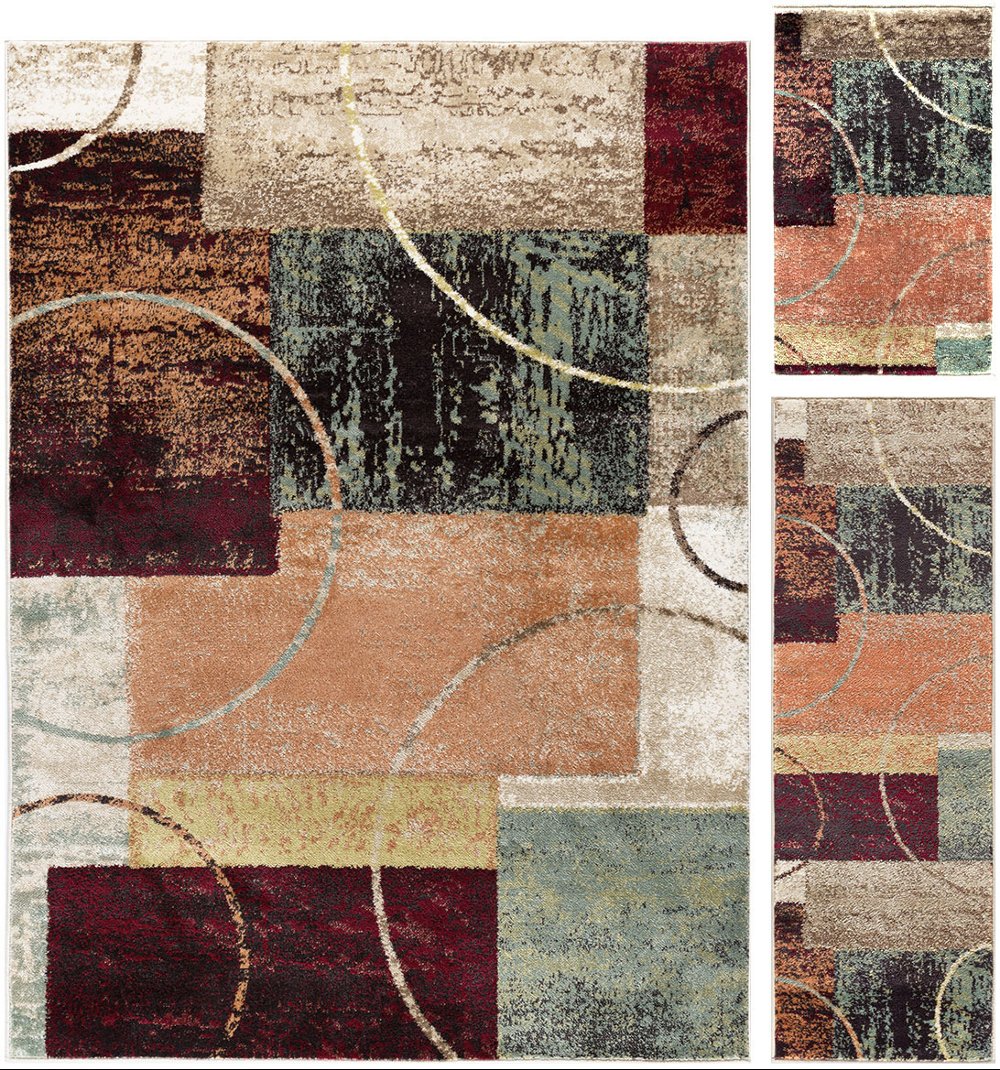
Simple fixes for tile’s acoustic challenges include:
- Strategically placed runners and area rugs in pathways
- Wall hangings and textile art pieces to absorb bounced sound
- Ceiling treatments like acoustic panels disguised as decorative elements
- Furniture with soft, sound-absorbing upholstery to balance the hard surfaces
Vinyl and Laminate: The Middle Ground for Sound and Comfort
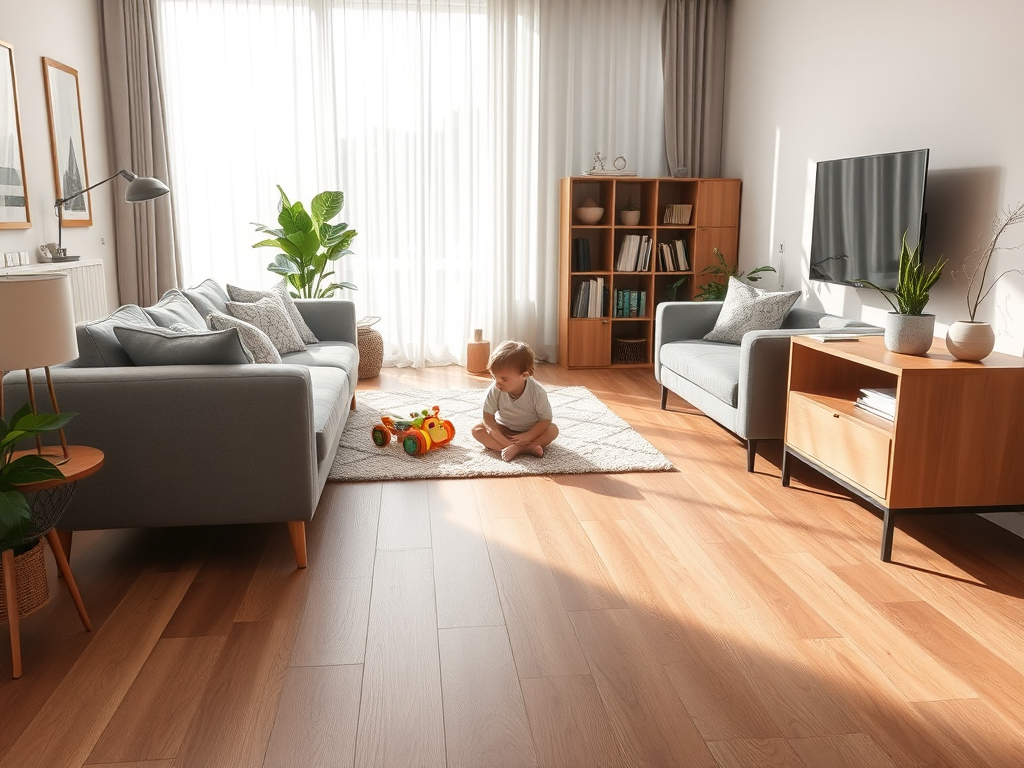
- Moderately reflective with some sound-absorbing qualities
- Often installed with underlayment that improves acoustics
- Warmer to the touch than tile but cooler than carpet
- Creates a balanced acoustic environment
Modern vinyl and laminate flooring offer a surprising sweet spot in the world of acoustics. Unlike their predecessors, today’s options often come with built-in acoustic underlayment that significantly reduces noise. After installing luxury vinyl plank in my living room, I was pleasantly surprised by how much quieter it was than the hardwood it replaced.
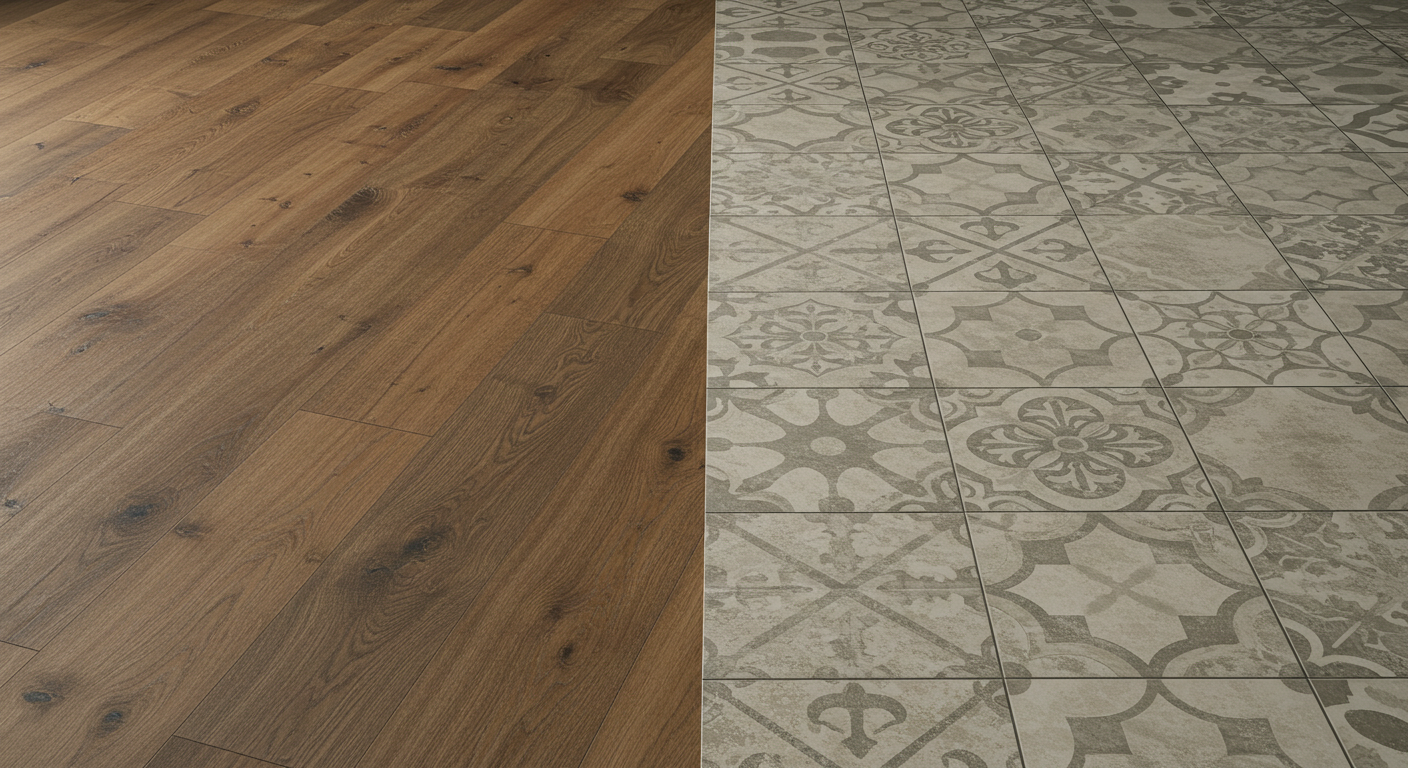
The acoustic benefits of quality vinyl and laminate come from both the material composition and installation methods. Floating floor systems allow for slight movement that can absorb impact sounds, while the density of good-quality products helps minimize sound transmission. For apartments or homes where noise control matters but hardwood isn’t practical, these options shine.
I’ve found that vinyl and laminate strike a nice balance emotionally as well. They don’t feel as clinical as tile or as formal as hardwood, creating a comfortable, livable vibe that works well for busy households. Many of my friends with young children have opted for these materials specifically because they offer a good compromise between style, practicality, and acoustic comfort.
Tips for maximizing the acoustic benefits of vinyl and laminate:
- Invest in quality underlayment if it doesn’t come with the flooring
- Choose thicker planks which typically offer better sound absorption
- Consider cork-backed vinyl for even better acoustic properties
- Install according to manufacturer guidelines to prevent squeaking or clicking
Cork and Bamboo: Natural Sound Absorption with Character
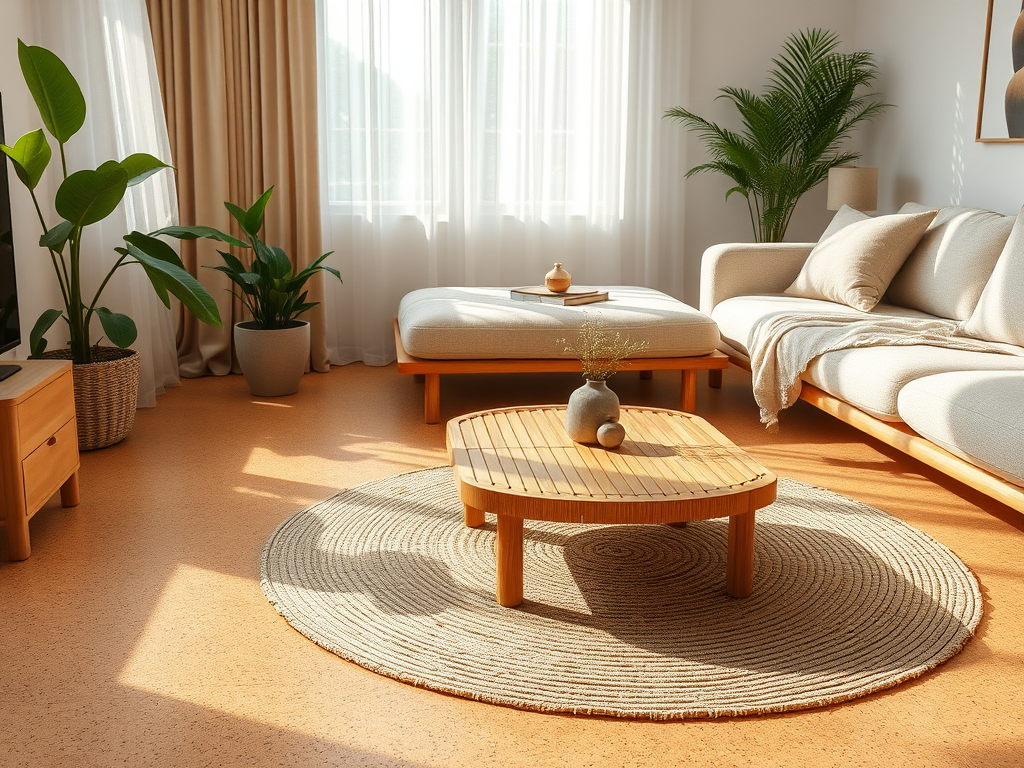
- Excellent natural sound absorption
- Adds warmth both physically and acoustically
- Creates a unique, organic aesthetic
- Supports eco-conscious design choices
Cork flooring is arguably the unsung hero of acoustic flooring options. Thanks to its naturally cellular structure, cork absorbs sound waves rather than reflecting them, creating a noticeably quieter environment. When my friend renovated her yoga studio, switching to cork flooring transformed the space from echo-filled to peacefully quiet.
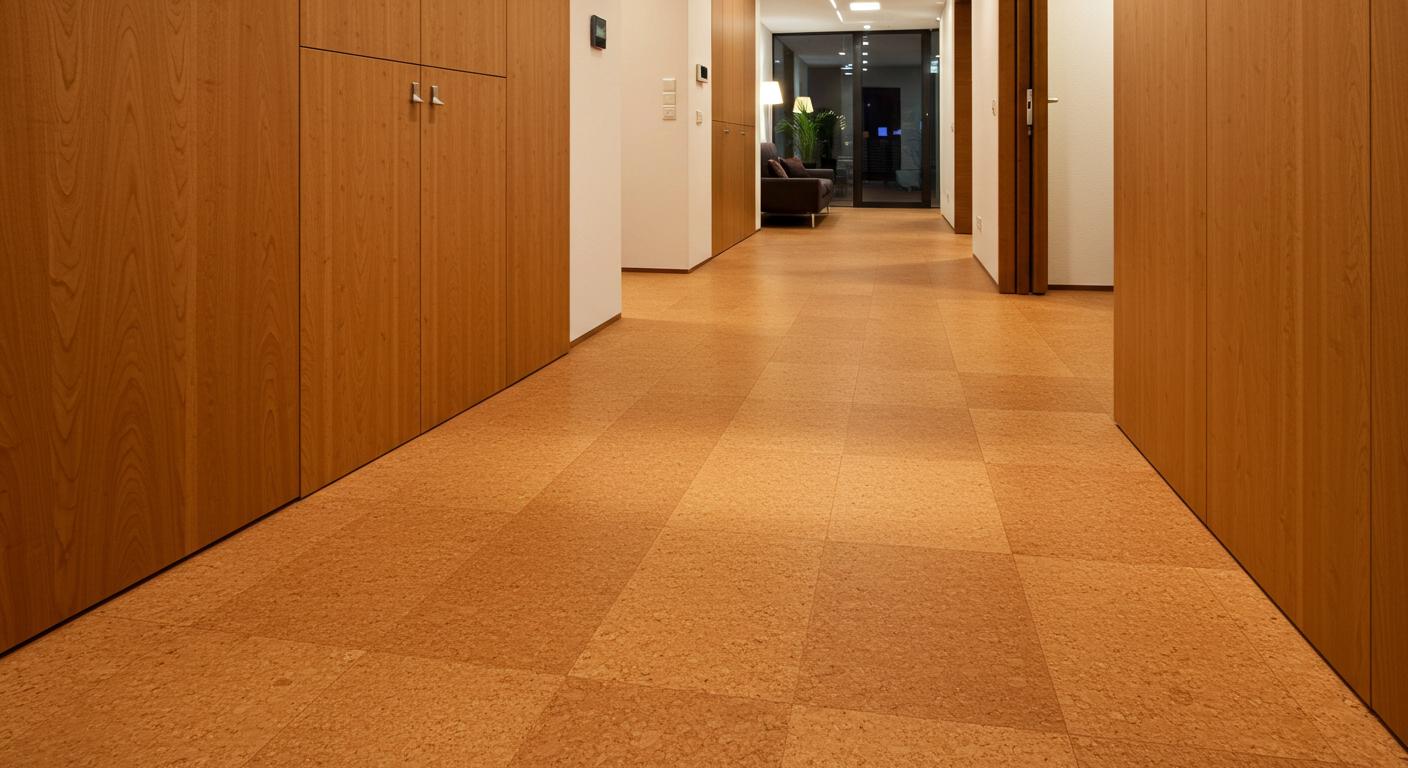
Beyond acoustics, cork and bamboo add a unique visual and tactile element that supports mindful, nature-connected spaces. These materials feel warm and slightly springy underfoot, creating a subtle but meaningful difference in how a room feels. I’ve noticed how these natural materials tend to create spaces that feel more grounded and calm.
The sustainability factor of these materials adds another dimension to how people experience them emotionally. Knowing your flooring choice supports ecological principles can create a positive association with your space. For small space solutions, cork and bamboo can be particularly effective as they create a sense of warmth without overwhelming limited square footage.
Why cork and bamboo excel acoustically:
- Cork’s cellular structure naturally traps and disperses sound waves
- Bamboo’s density helps block sound transmission between floors
- Both materials have natural give that reduces impact noise
- Their textured surfaces break up sound reflection patterns
How to Adjust Acoustics Without Replacing Your Floors
Not everyone has the budget or desire to replace their flooring just to improve acoustics. Fortunately, there are plenty of ways to modify how different flooring materials affect room acoustics and feel without a complete renovation. I’ve used many of these techniques in rental apartments where changing the floors wasn’t an option.
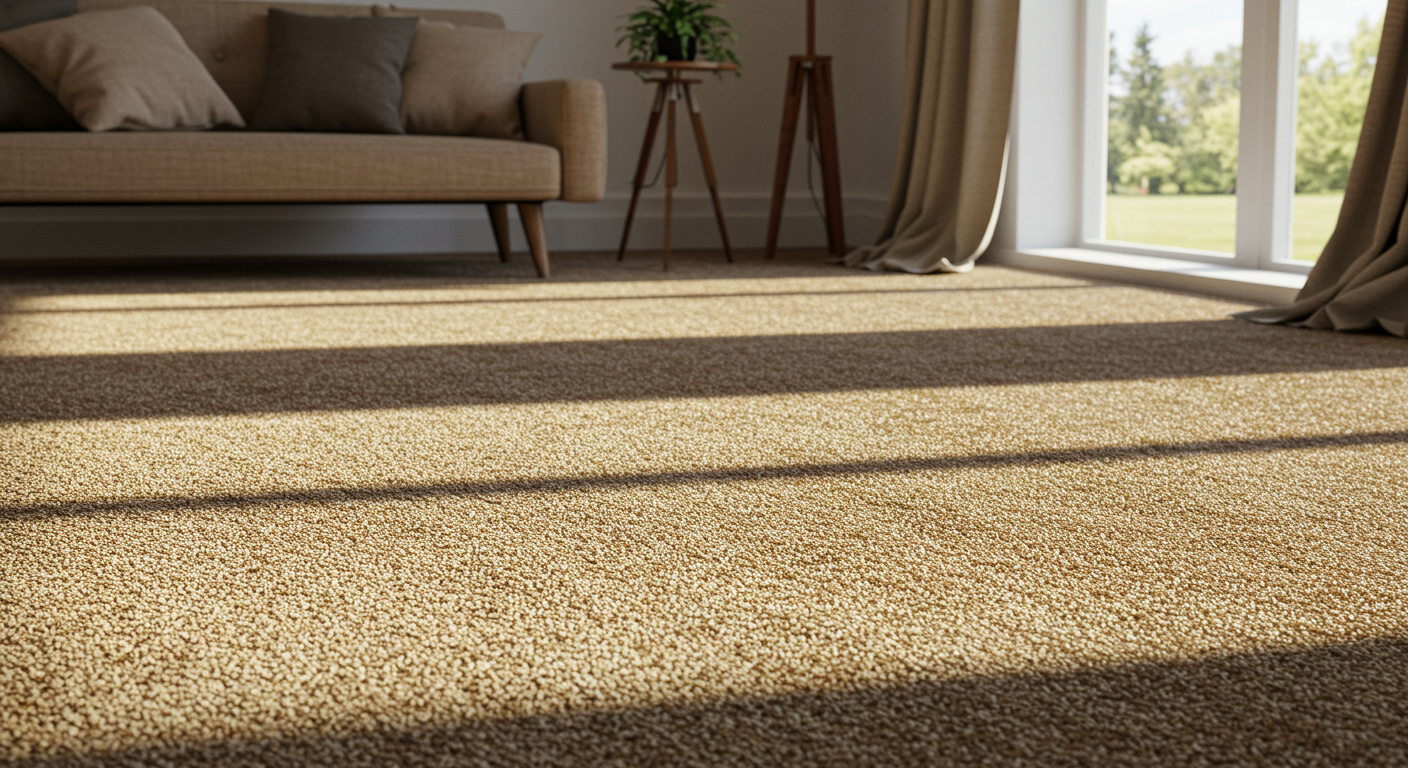
Area rugs are your best friend when dealing with hard flooring surfaces. A thick, quality area rug with proper padding underneath can dramatically reduce echo and create acoustic zones within larger spaces. I placed a large wool rug with thick padding in my tiled dining area, and dinner conversations immediately became clearer and more intimate.
Wall treatments often get overlooked when addressing floor-related acoustic issues. Fabric wall hangings, tapestries, or even canvas art can help absorb sound that would otherwise bounce between hard floor and wall surfaces. Making cheap decorative elements look custom can include DIY fabric panels that serve both aesthetic and acoustic purposes.
Strategic furniture placement can also significantly impact how sound travels in a space. Placing bookshelves along walls helps break up sound reflection patterns, while upholstered furniture with plenty of fabric absorbs sound that would otherwise bounce off hard floors. Even the addition of potted plants can help diffuse sound waves in rooms with challenging acoustics.
Quick acoustic improvements for any flooring type:
- Layer rugs of different textures for maximum sound absorption
- Add floor-to-ceiling curtains even on walls without windows
- Incorporate plush throw pillows and soft ottomans
- Use bookshelves filled with books as natural sound absorbers
- Consider ceiling treatments like fabric panels or acoustic tiles
Matching Flooring Acoustics to Your Lifestyle Needs
When considering how different flooring materials affect room acoustics and feel, it’s crucial to align your choices with your actual lifestyle rather than just aesthetic preferences. In my home, we selected different flooring types for different zones based primarily on acoustic needs. Family activity patterns should guide your flooring decisions more than trends.
For homes with musicians or media enthusiasts, prioritizing sound control becomes essential. My neighbor who plays piano opted for cork flooring in his practice room, finding the perfect balance between sound quality and preventing noise transfer to other parts of the house. Similarly, home theater spaces benefit from carpet or cork to prevent sound reflection that can muddy audio quality.
Parents of young children often face different acoustic challenges. The pitter-patter of little feet can become thunderous on hardwood or tile, making carpet a sanity-saving choice for playrooms and bedrooms. My sister installed laminate with premium underlayment in her family’s main living areas, successfully reducing the constant noise of active kids while maintaining a stylish, practical surface.
Considering the acoustic profile when choosing a home decor style ensures your space will not only look good but feel good to live in. The most beautifully designed room can become uncomfortable if the acoustics create stress or communication difficulties. True comfort comes from harmony between visual elements and sensory experience.
The way different flooring materials affect room acoustics and feel is something you’ll experience every day in your home. It’s worth taking the time to consider not just how your floors will look, but how they’ll sound and feel as you live with them. Whether you’re building from scratch, renovating, or just looking to improve your current space, small adjustments to acoustics can dramatically improve your daily experience and comfort.
Remember that perfect acoustics don’t necessarily mean complete silence – they mean creating the right sound environment for your activities and preferences. Each flooring material brings its own character to your space, affecting everything from conversation flow to relaxation quality. By making informed choices about your flooring, you’re designing not just how your home looks, but how it sounds, feels, and supports your lifestyle every day.




